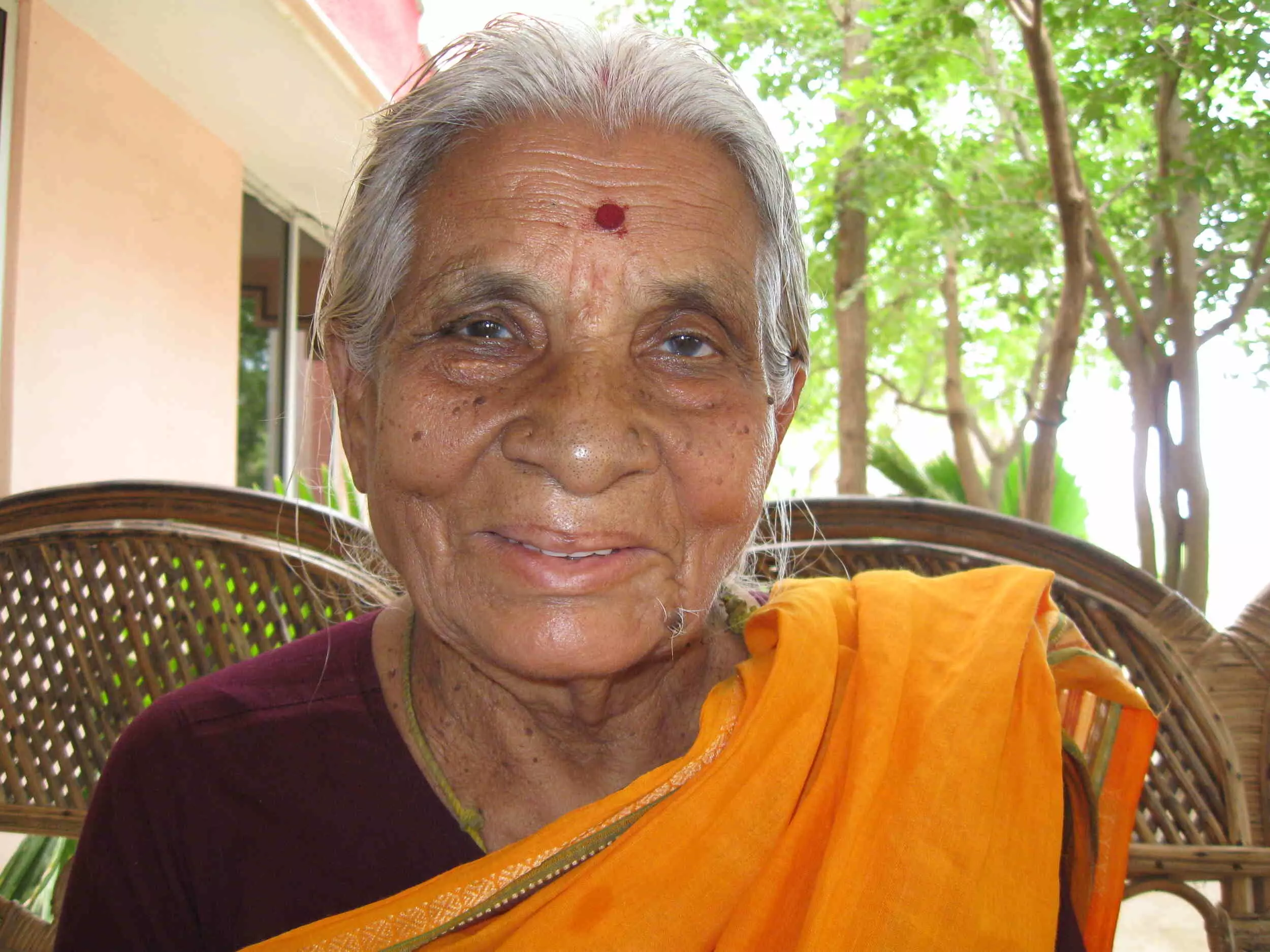Helmswoman of a Silent Revolution
In line with the Gandhian spirit, 100-year old Krishnammal Jegannathan continues to be a reckoning force towards restoring dignity to Dalits by gifting them land, shelter, and self-worth

Krishnammal Jegannathan, a well-known Gandhian, is known for her struggle to restore dignity to Dalits—particularly Dalit women—by giving them a decent house and one acre of land for their livelihood. Through this, she declares that the tiller becomes a citizen. According to her, if one has no land and no decent house of their own, they have no dignity, and they are not truly a citizen.
Both she and her husband, Jegannathan, fought relentlessly throughout their lives for land for the tillers. Drawn towards Gandhi, they dedicated their lives to Gandhian work in rural areas, especially for the oppressed. They worked with Vinoba Bhave and Jayaprakash Narayan and continued their struggle for the cause of the marginalised.
Krishnammal Jegannathan continued this struggle even after the demise of her husband Jegannathan, who passed away at the age of a hundred. On June 16, she entered her 100th year. Members of the Gandhian community wanted to celebrate the occasion in a grand way, but she refused. She informed everyone that a true Gandhian celebration lies in removing the tears from the eyes of the poor. According to her, working with the poor and the marginalised for their betterment and restoring their dignity is liberation—and one must find joy in working with the poor, the weak, and the meek.
At the age of 100, she is conscious, stable, and active. To mark her 100th birthday, she arranged to give land to 29 poor households in Kuthur, a remote village near Nagapattinam. On June 16, she went to the registration office and registered the land for all the families, working from eleven in the morning till seven in the evening.
She lives in Gandhigram, in a small tiled hut known as a "workers’ home," created at the dawn of Independence to train constructive workers for Gandhian work in rural Tamil Nadu. This modest hut has been visited by Martin Luther King Jr., Vinoba Bhave, and many Gandhians from across the world.
At a time when Gandhian institutions are struggling to survive, she continues to inspire both youth and Gandhian scholars—something unique and noteworthy. Both she and her husband were invited by Jayaprakash Narayan to Bihar to work on the "Land for Tillers" initiative. She even fought against a mutt and secured land for the landless poor. Because of her efforts, about 12,000 poor families received land, registered solely in the names of the women. She has received many prestigious awards.
To this day, she remains successful in her struggles and continues working with the marginalised to help them secure land and housing. The reason for her success is that neither she nor her husband was ever interested in establishing institutions. Wherever people were in struggle, they joined them, organised nonviolent movements, and ultimately succeeded.
The method adopted by her is very simple and doable for anyone: go to the affected people, create awareness among them about the possibilities of solving their problems using available means, organise them, and guide them to struggle to solve their problems on their own—for which a Gandhian is only a catalyst and guide. First, a Gandhian worker should build confidence in the minds of the poor that he or she will guide and stand by them till the end. This is her mantra and method for any struggle to solve the problems of the people.
After the demise of her husband, every year the Gandhians used to celebrate his death anniversary in the name of Sarvodaya. It is called Sarvodaya Day, to remember the works of Jegannathan. On that day, a large number of Gandhians from Germany, the US, Canada, Belgium, Poland, the Netherlands, Cambodia, and Sri Lanka came and participated in the event, discussing an important issue humanity currently faces and how to solve it through the Gandhian way or method.
A large number of youths used to come and participate in the programme every year. Youth who work with tribals, Dalits, and women, and who work for the environment, water, sanitation, and livelihood, got inspiration from her. She used to share her experiences of non-violent struggle to solve the critical issues of the poor and the deprived. She was given several awards by the Government of India and by organisations from all over the world. She spent the entire award money on the poor in rural areas.
The first biography of both Jegannathan and Krishnammal was written not by an Indian but by an Italian. It was published in the Italian language and later translated into English by an American professor. After reading it, a biography of both was written in Tamil by a well-known writer, Solai. Ramachandra Guha, a contemporary historian, has also written about the work of these Gandhians.
Though she rejected the proposal of celebrating her 100th birth anniversary, people from different walks of life—MPs, MLAs, local leaders, and youth from various regions—came and had a small meeting with her at night. A drama was enacted on the theme of war and the environment in the village, in the premises of her small office under a tree. It was a solemn occasion for many youths. I also went to see her on that day in the remote village, and I felt that this model of leadership is the need of the hour for society—to orient the youth to work with the poor and help restore the dignity of the marginalised.
The writer is a former Professor and Rajiv Gandhi Chair for Panchayati Raj Studies, Gandhigram Rural Institute. Views expressed are personal



